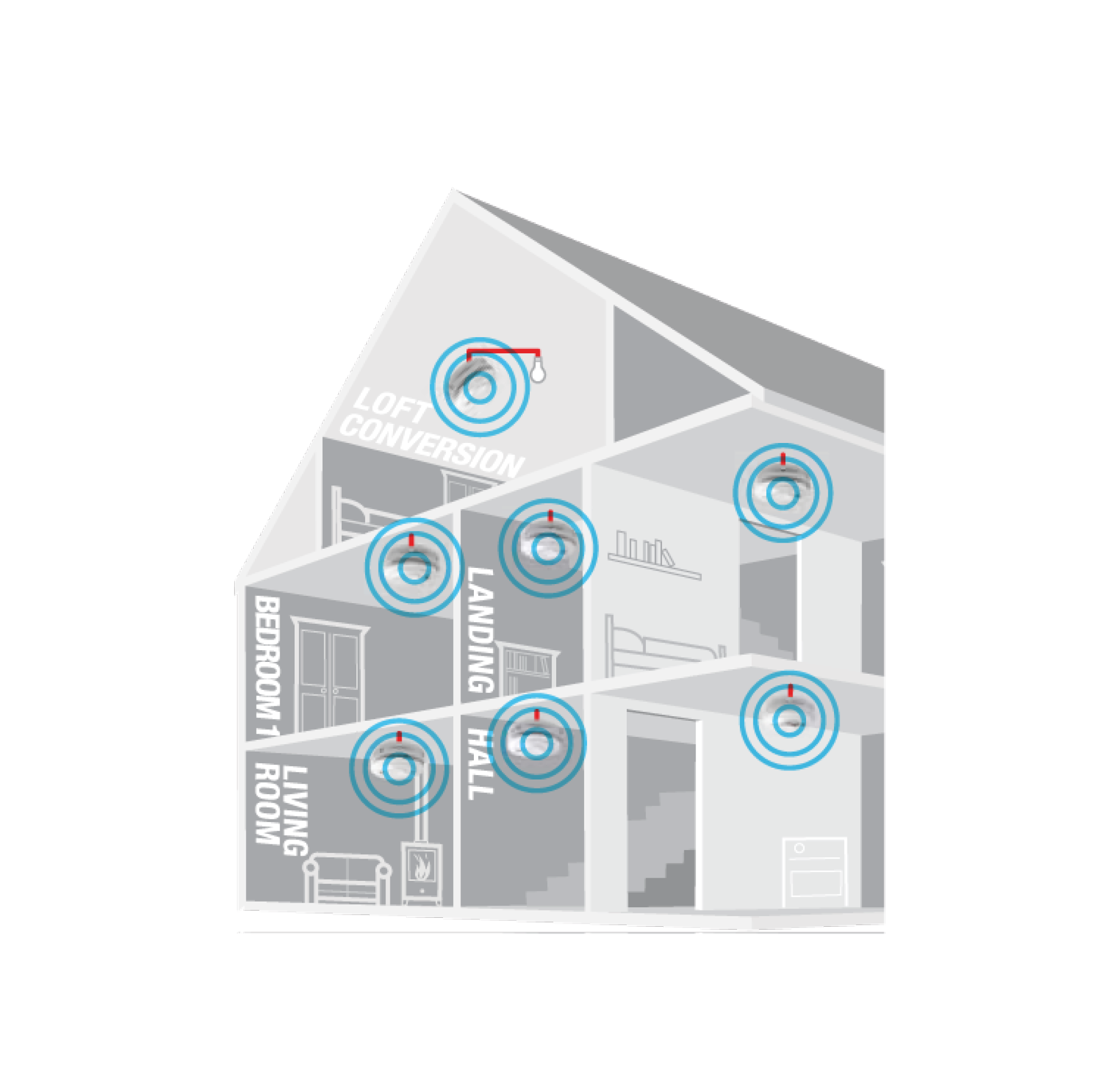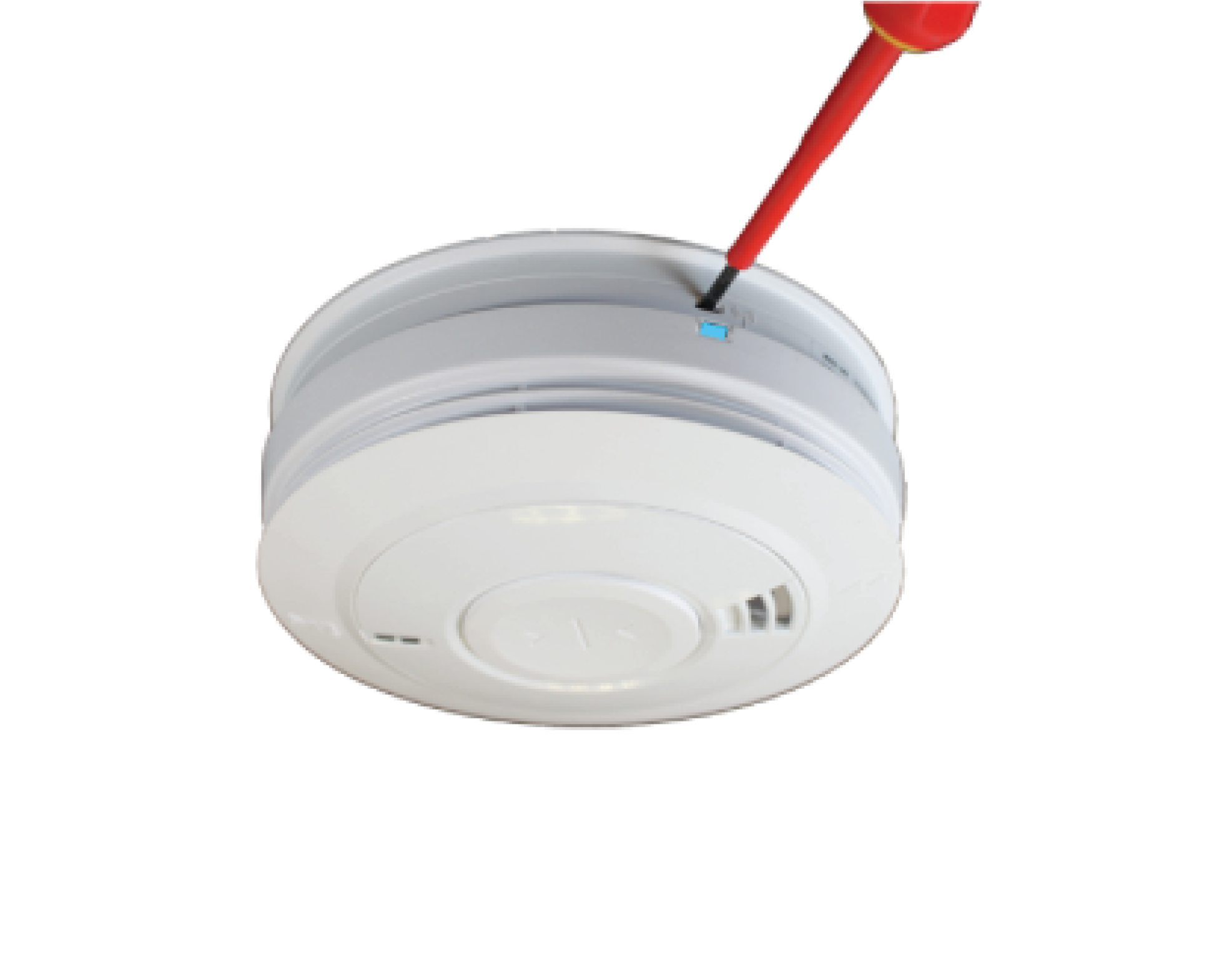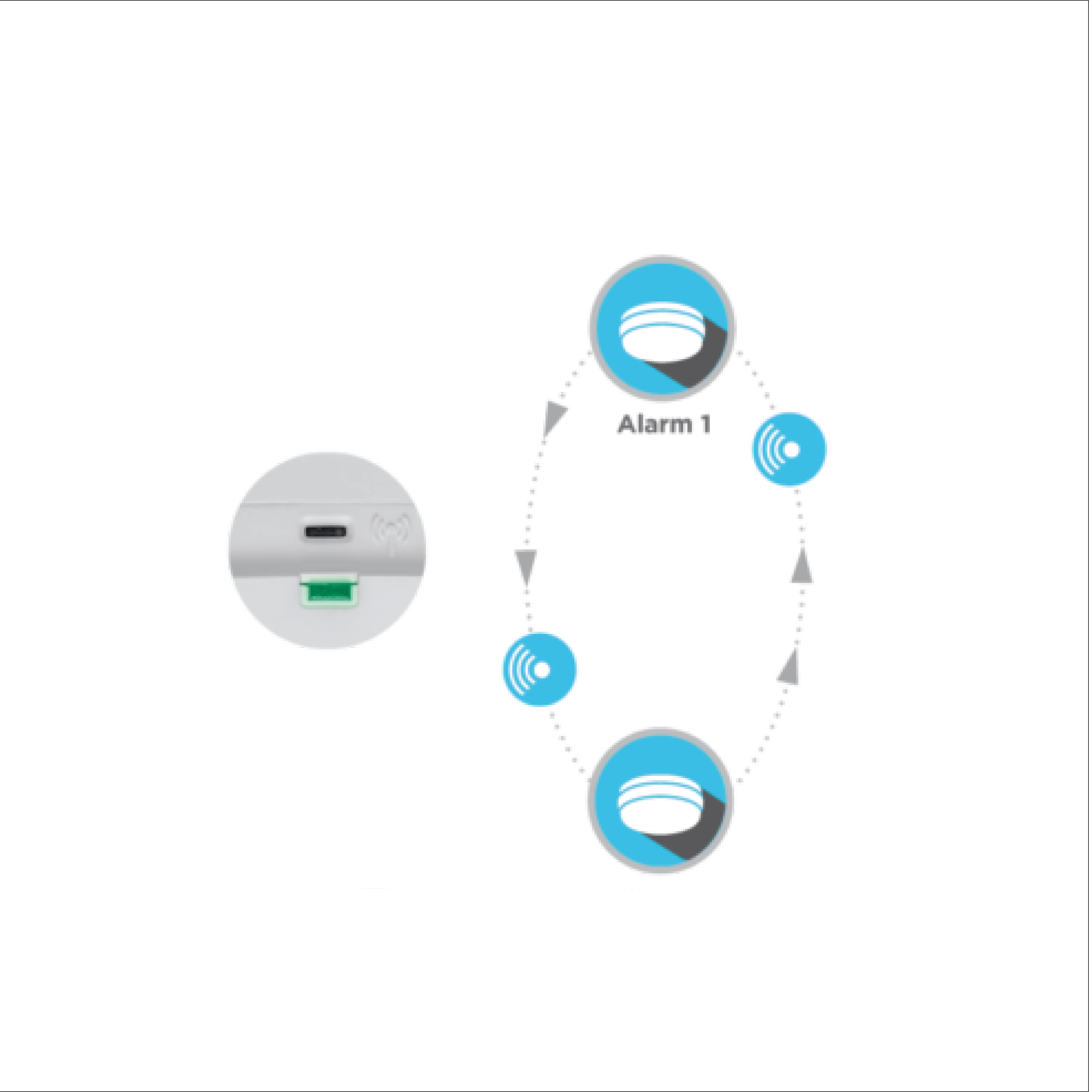
Why should I choose wireless interconnection?
- Eliminates tricky wiring runs
- Saves time at installation
- Reduces mess and disruption during installation
- Saves money
- Makes it easier to add in new alarms and accessories
RadioLINK+ wireless interconnection technology uses Radio Frequency (RF) signals to wirelessly link alarms together with added functionality. Interconnecting alarms is vital so that occupants can hear the alarm throughout the property and is required in the British Standard BS 5839-6:2019+A1:2020, but this technology can now do so much more including whole system data extraction and monitoring.


To enable each RadioLINK and RadioLINK+ alarm to interconnect wirelessly as a system they must be connected together – ‘House Coded’. When each alarm is in House Code mode it will learn the unique serial numbers of the other alarms to establish a secure connection.
With the introduction of the RadioLINK+ module, the House Coding slot has now been moved onto the actual alarm making it easy to access and use. All the alarms can be House Coded in situ when installed. This is significant as it allows the installer to check the Radio Frequency signal (used for wireless interconnection) strength at the exact location the alarms will be when protecting the occupants and dwelling.
This ensures that every alarm receives the signal and, most importantly, sounds to give warning of a detection. The range of RadioLINK+’s RF signal is 100m with a clear line of sight and 30m in a standard property, meaning that in a normal installation you should have no problems with signals between alarms and RF signals have their own frequency so won’t be affected by Wi-Fi, Bluetooth or mobile phones.
Previously, if you wanted to add another RadioLINK alarm or accessories into an existing RadioLINK system, each alarm would have to be manually put into House Code mode. With RadioLINK+ only one alarm in the existing system needs putting into Remote House Code mode along with the new alarm/accessory that needs adding. As well as enabling wireless interconnection, RadioLINK+’s capabilities have grown making it simpler to control, test and asset manage alarm systems even when access to the whole property is not possible.

Each alarm in the system will pair up with another alarm. At regular intervals, these two alarms will communicate with each other. If someone has removed Alarm 1 from its base, Alarm 2 will not get a response and log it into its memory and change its indicator light. It will also send an ‘Alarm Removed’ signal that can be used to trigger a warning to a third party device, e.g. a warden call or panel system, if connected to a modulesuch as the Fire/CO Alarm Interface Ei414.
When using the Ei160e Series with the EiUSB1, details of the system can be collected, such as number of units, types of alarms, location of alarms, RF signal strength, device serial numbers, and how long the alarm has been in operation.
Once set up, information can be accessed securely from within or outside a property if access is an issue. Event logs can be retrieved as many times as necessary and for each alarm on the system, retrieving data such as how many direct button tests have been performed and when, any issues with the battery and/or mains supply, carbon monoxide (CO) levels detected if a CO alarm is on the system, Radio Frequency signal strength between alarms, age of alarms and any alarm removed.
All the alarm data can be extracted securely and saved to a central location to be stored. Data extraction can take place again and again, building up a history of alarms systems in individual dwellings.
The Ei160e Series and EiUSB1 have been discontinued, but the data extraction and wireless interconnection features have since been replaced by the 3000 Series, SmartLINK Module, and HomeLINK Gateway.
Find the information you need in our library of educational and informative resources.
FAQs